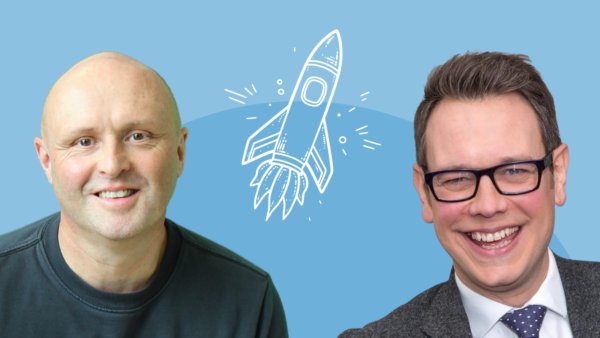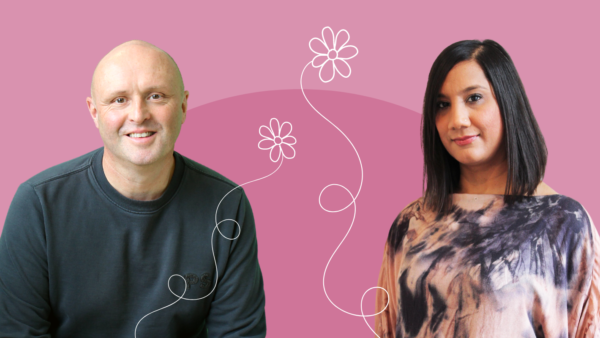Podcast transcript:
Is every organisation ‘strengths-ready’?
In our work with strengths, spanning over 17 years, we’ve seen a significant shift in the adoption of a ‘strengths approach’ in organisations from the mid noughties, when we began our journey, to now. Back then, we needed to educate and explain to many of our clients the benefits of the strengths approach. That still happens today, but not as much. Strengths have become more mainstream and many HR and L&D professionals have come across it on some form in their careers. However, beyond the people professions, this is far less often the case. So we always take the time to discover where an organisation is actually at in their current thinking and practices before we recommend a route map for them to navigate their strengths journey.
An important lesson that we have learned along the way is that not all organisations are as ‘strengths ready’ as each other. Some organisations may benefit from adopting strengths-based practices but before this can be successful, they have foundational work to complete on their employee proposition. Other organisations may be primed and ready to go from a people policies and practices perspective but their culture doesn’t necessarily lend itself easily to a strengths based approach. And far fewer organisations are in the enviable position of being able to ‘plug strengths in’ to their employee experience straight away because there’s a great culture fit, a clear need, and the foundational people process work has been done. These organisations are very much ‘strengths ready’. But how do you know if your organisation, or one you’re working with, is strengths ready? That’s what we’re going to explore in this podcast.
What is the strengths approach anyway, please remind me
Before we get into that, I’d like to describe what I mean by strengths-based practices and by a strengths approach in the first place. At Strengthscope, we define strengths as those qualities which energise you and which you are great at or have the potential to become great. Our contention is that in most organisations, employee development decisions are driven more by a focus on improving weaknesses and shortfalls, i.e. if you get better at this thing that you are bad at then you will be more successful in your role and career, rather than focusing on identifying and developing people’s strengths, that is where they naturally make a strong contribution and with further development, can become exceptional.
The strengths approach is founded in positive psychology, which in essence is the science of ‘what goes right in life’, that is finding what works, understanding it and doing more of it, rather than having a sole focus on where things are going wrong and fixing them. That is not to say that taking a more deficit-focused approach doesn’t have value. But it’s more to say that there is a law of diminishing returns here…although plugging the holes in the boat that will sink you (your critical weaknesses) is essential if you’re going to avoid disaster, it’s unlikely that you will ever turn a weakness into a strength, no matter how much effort you put in.
So the strengths approach essentially involves rewiring people processes and reprogramming a culture, so that there is first a focus on supporting people to be at their best in ways that come naturally to them, without ignoring areas of risk that they must absolutely be aware of and will need to mitigate.
Strengths can be introduced into the attraction and recruitment process, onboarding, development, engagement, promotion, retention and even the exit process…so right through the employee lifecycle. And if you are to genuinely create a long lasting strengths based culture and organisation, this is the ideal…that you weave the approach throughout all your people practices so that employees experience a consistent focus on their strengths and talents and how these can inform their best contribution in role as well as providing a clear career path.
Identifying the need – where can a strengths approach be of greatest benefit?
Let’s return to the challenge that I outlined earlier – that sometimes the organisations who could benefit most from strengths approach may be those who are less ready for it. We know that bringing strengths into people processes can be really beneficial when:
- Employees feel unmotivated or disengaged in their roles, or they feel like their full potential is not being tapped – this is because focusing on maximising employees’ strengths rather than minimising weaknesses can increase engagement and a sense of being valued
- There are skills gaps or weaknesses within teams – because understanding each person’s strengths can help with better assignment of responsibilities
- People struggle with providing open and honest feedback to each other – because the strengths approach creates greater psychological safety and so enables people to be more open
- Leadership is overly focused on problems rather solutions – because when leaders adopt a more strengths-oriented style, this can support more of a solution-focused, innovative approach
- Professional development is not tailored to individuals – because the strengths approach involves enabling people to develop and apply their unique strengths.
It’s important to say that if you’re looking at an organisation with all of these pain points, rather than one or two, then it will be worth considering what might need to happen first to stabilise and steady the organisation before considering introducing a strength focus.
Organisations with low staff motivation and morale, underperforming teams and focus on the negative rather than the positive might be an organisation under stress and pressure that might struggle to successfully introduce a strengths based culture in the short term. If an organisation is in a depressed, stressed, or even panicked state, then leaders and people professionals are more likely to be firefighting and focused on avoiding disaster rather than considering adopting a more positive approach. The strengths approach isn’t only about good to great, but it also can’t fix everything.
What we’ve found is that organisations which are in more of a steady state, with established people processes, so appraisals and learning and development plans are in place; recruitment, talent management and promotion systems already exist; and there’s a programme of learning and development are those which, when they also present with any of the pain points I mentioned earlier, could benefit most from a strengths injection. Because strengths shifts the focus to the positive, to empowering people to be the best version of themselves, to encourage teams to get honest about where they’re strong and where they lack, to get people giving feedback to each other in a constructive way (strengths in overdrive is such a powerful idea for shaping feedback about what someone needs to change), and to getting people focused on developing skills in areas of natural strength rather than sending them on another round of diminishing returns weakness development.
Where has it gone wrong? Where has the strengths approach not landed?
Learning from organisations who have tried unsuccessfully to implement a strengths-based approach, here are some examples of what can go wrong:
- Senior leaders seeing the approach as too ‘soft’ to truly drive performance
- The approach not being sufficiently practically supported or woven through people processes, so it peters out following launch
- Strengths not being aligned with brand or culture through language, employee value proposition or external messaging
- A lack of attention in recruitment and onboarding meaning that over time, natural attrition leads to the knowledge and approach being lost.
What do I need to do to give the strengths approach the best chance of success?
Don’t forget, the strengths approach in most organisations requires mindset shift and cultural change in order to overcome the intrinsic negativity bias that exists in almost every organisation as a reflection of wider society.
Here are some key things an organisation needs in place for an effective strengths-based approach to land well and stick long-term:
- Leadership buy-in and modelling – leaders need to be on board with the philosophy and willing to adopt strengths-based language and mindset themselves
- Learning and development resources – assessments, workshops, coaching etc. allows people to identify and develop their strengths at the practical level
- Flexible job design/openness to role crafting – roles and responsibilities may need adjustment to better align with employees’ strengths.
- Performance management evolution – shifting focus toward recognising strengths versus criticising weaknesses in appraisal and review processes
- Holistic recruitment and hiring – you need strengths identification and exploration in hiring practices and this needs to be thoughtfully designed in
- Open communication – for the approach to work, employees need to feel comfortable sharing their strengths and risks with managers which means managers need to work on creating a safe environment to do this
- Meaningful growth opportunities – strengthening strengths benefits from continuous learning and application in new areas
- Realistic transition timeline – organisational culture change take time; strengths-based changes should be incremental.
Conclusion – not every organisation is ready for strengths but every organisation can become ready for strengths
The strengths approach works. It makes a measurable business difference when well implemented. But for that to happen, your organisation needs to be ready. I hope what I’ve described gives some guidance on what to do and what not to do to get a positive outcome when introducing strengths. Good luck on your strengths journey. Till next time, stay strong.













